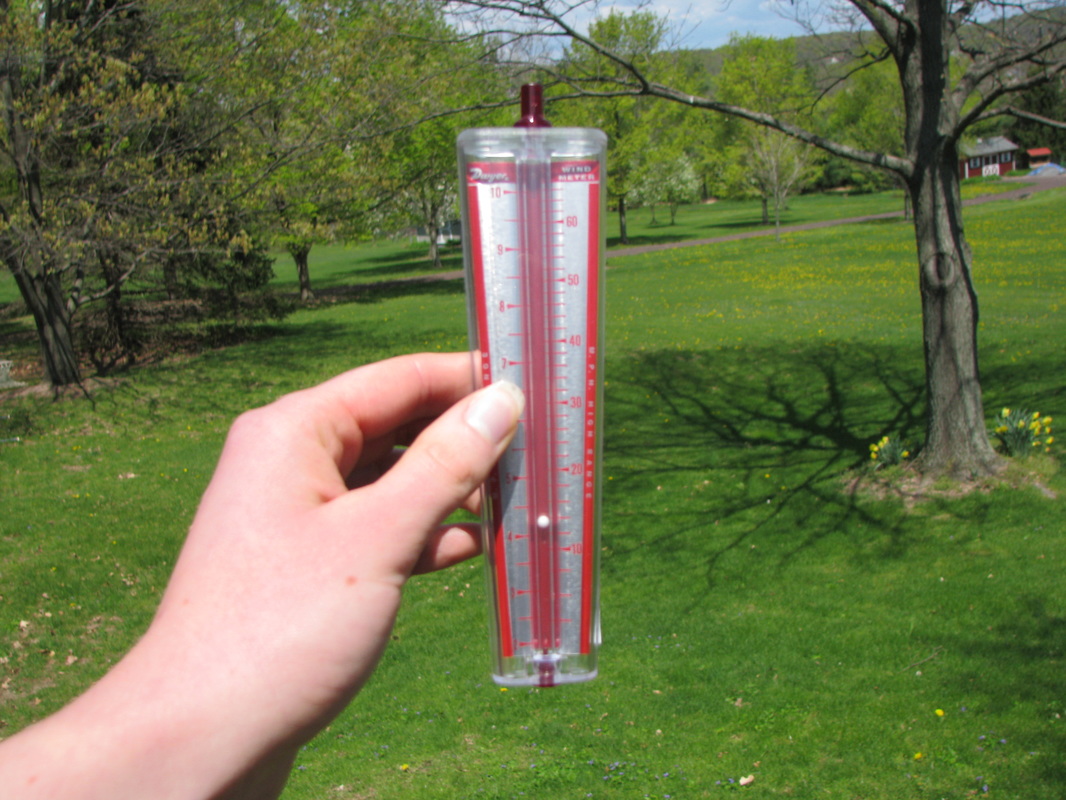|
Valerie Metzler's Inquiry of applied science learning |
Weather Predictions

Prior to this activity, we discussed the properties of weather in a chalk-and-talk session in the classroom. I summoned students' prior knowledge by asking if they knew any elements of weather. They hesitated but responded, listing temperature, precipitation, and wind as important components of weather. We then talked about wind direction and speed, air pressure, and cloud cover. I went on to instruct students about these elements and what each indicates about the change in weather patterns.
After this brief introduction, students were given the hand-out below and I provided some assistance for students to use the instruments provided (anemometer, compass, barometer, thermometer) to record our data and make weather predictions based on this data. The following day, we discussed their predictions and assessed the accuracy of their forecasts. We revisited weather forecasts in the Biome project, since I required students to write a mock weather report for their location. Students were quizzed on this information several chapters later (one month) and I was pleased to see they retained the knowledge I asked them to recall. seven out of ten students answered all five questions correctly and the class as a whole answered forty one out of the fifty questions correctly (83%). |
Above: Students were instructed to: "Match the weather condition with the prediction you would make" for Philadelphia.
Below: 70% of the students correctly matched all five. |
Students' long-term retention of information and high level of engagement throughout the activity may be taken as evidence to support my hypothesis about applied learning. Each student was responsible for creating a weather prediction and was invested and motivated to gather the information in order to solve this weather "mystery." Several months later, one student (who is typically disengaged) proposed we create weather forecasts as our activity at the booth we volunteered to run at Temple University's Earth Fest in April.




